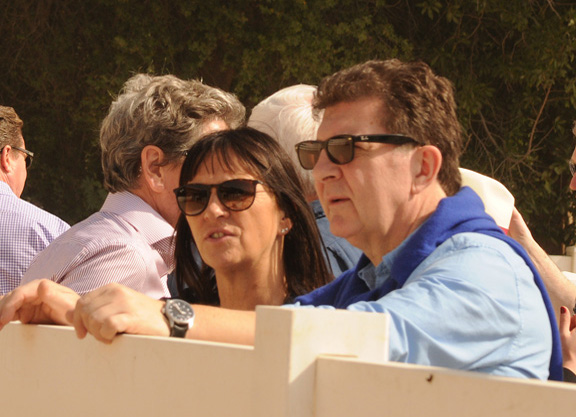After reading John Boyce's excellent article in the TDN (Nov. 12), I have the following observation.
Unlike John, my statistical training goes back to the days of the slide rule. Yet precious little arithmetical skill is required to understand the lesson he has parsed on the state of the bloodstock industry in his article on the 2020 yearling sales.
Taking up pen, paper, and employing some old long division skills, it is clear, when one approaches the subject from a slightly different angle, that his conclusion that the present situation “will surely hasten a fundamental review of the supply and demand of commercial young stock” is reaffirmed.
The Racing Post's excellent 'Sires Averages and Medians' table of Nov. 2 captures results from all the major yearling sales of 2021 to date. In this table 109 stallions have 10 or more yearlings sold against their name. Yet, of that number, only 15 stallions returned a median price in excess of the 2018 advertised stallion fee plus a conservative (at least for my farm) £20,000 cost of production.
The average loss at the median across all stallions showing negative returns is £15,000, ranging from £57,000 in the case of the worst-performing stallion (by this measure) to around £1,000 in the best case among the negative group.
Some of the individual stallion numbers are especially informative as the season for choosing 2021 covers gets underway and stallion fees are reset. Interested parties will be able to do their own sums!
Of course, not all of a stallion's crop sells at a yearling sale—some are retained, some sold as foals and,in addition, discounts on published fees are often obtained. So the complete picture is a tad more complicated.
Clearly though, returns overall do not come close to justifying the cost of service and production across the canvas as a whole and this lack of demonstrable 'commerciality' must be of real concern, as much from a fiscal perspective, as from the personal sense of striving for the satisfaction of success in one's endeavours. Arguably, unless the days of the 'Corinithian' attitude to Thoroughbred animal husbandry can be consigned to the pages of history, we will be responsible for the commercial decline of a fine industry employing many people and enjoyed by equally as many.
While the diagnosis is rather easily found, the trick will be to come up with the cure in an environment where the funding model of the racing business is broken.
The statistical evidence does clearly show, however, the extent to which the breeding business is increasingly, for many, like balancing on a water biscuit in a torrent!
Colin Bryce
Laundry Cottage Stud
Hertfordshire
Not a subscriber? Click here to sign up for the daily PDF or alerts.






